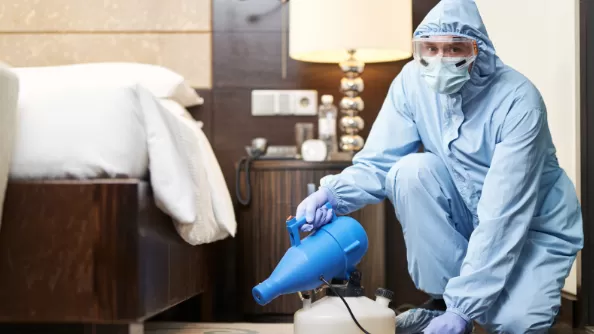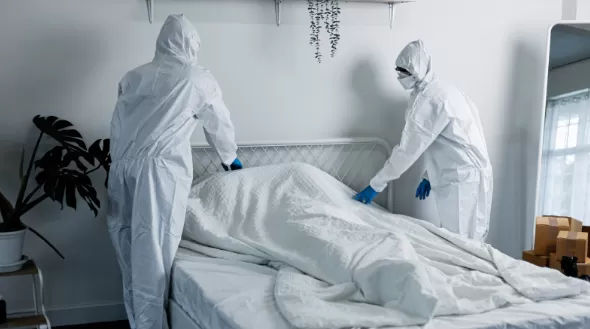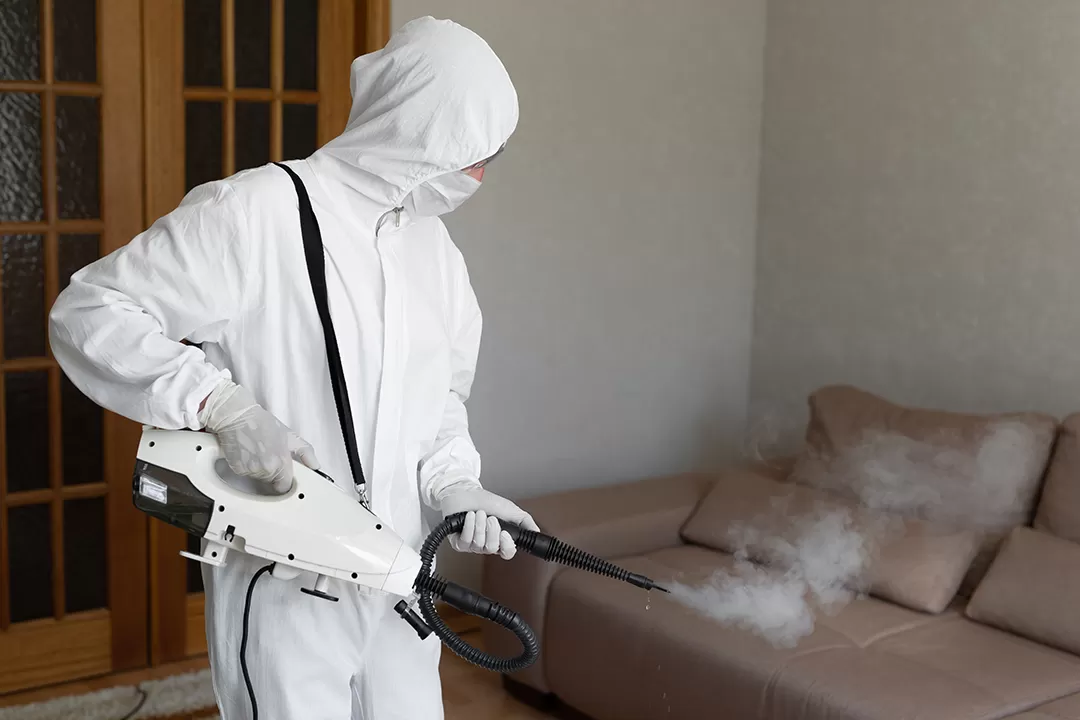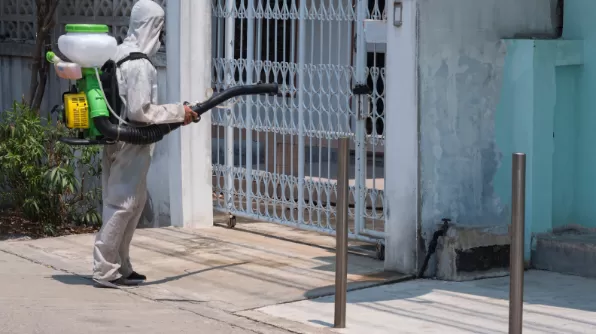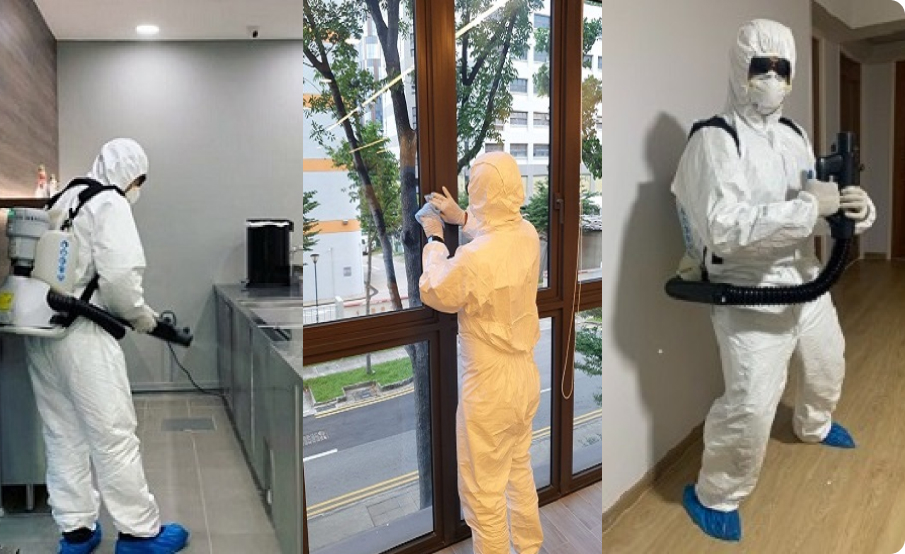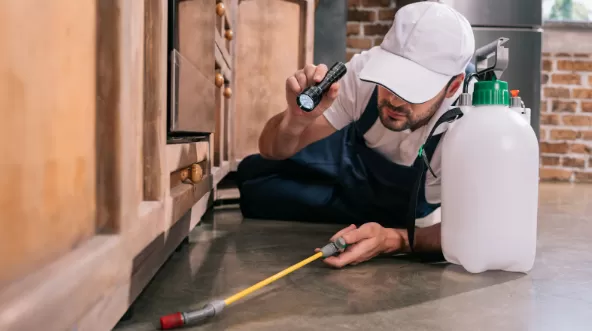Addressing a bed bug infestation can be quite frustrating and unsettling. These tiny pests have a way of disrupting sleep and invading one’s peace of mind. Fortunately, there are effective bed bug removal measures to reclaim your home from these intruders. This guide outlines essential strategies for identifying and swiftly eliminating bed bugs, ranging from thorough cleaning to natural remedies and professional pest control. Whether you are dealing with a minor annoyance or a more significant infestation, understanding these methods will aid in restoring comfort to your living space. According to the U.S. Environmental Protection Agency (EPA), implementing comprehensive measures like these can help both eliminate current bed bug issues and prevent future infestations.
Key Takeaways:
- Identifying the signs of bed bug infestation is crucial in eliminating them quickly at home.
- Decluttering and thoroughly cleaning your home is an important step in getting rid of bed bugs.
- Consulting a professional pest control service is the most effective way to eliminate bed bugs and prevent future infestations.
Identify the Signs of Bed Bug Infestation and Severity
Identifying the signs of a bed bug infestation is essential for early detection and effective pest control methods, especially when dealing with bed bugs in Singapore. Bed bugs can be quite challenging to spot, but by understanding their hiding habits and recognizing the typical signs of their presence, you can take immediate action.
These small, reddish-brown insects, often compared in size to an apple seed, tend to hide in cracks and crevices throughout your home, especially in bedrooms, feeding on the blood of animals and humans. They thrive on the blood of both animals and humans.
Common indicators of an infestation include:
- Dark spots on bedding or furniture
- Tiny eggs
- Itchy red bumps on the skin known as bed bug bites
According to ResearchGate, advancements in bed bug detection technologies are continuously evolving, offering new methods for identifying these pests effectively.
Declutter and Clean Your Home to Remove Bedbugs
To effectively manage and prevent a bed bug infestation, especially in Singapore, it is essential to regularly declutter and clean your home. A cluttered environment offers many hiding spots for these pests, allowing them to thrive undetected.
Items such as piles of clothes, stacks of magazines, and even unused furniture can harbor bed bugs and their eggs, potentially leading to a more significant infestation. By reducing clutter, you not only decrease the number of potential hiding places but also streamline the cleaning process, enabling thorough inspection and treatment of areas where bed bugs might be hiding.
Vacuum Thoroughly After Each Use
Using a vacuum thoroughly is one of the most effective methods for controlling bed bugs and preventing their spread. This process involves targeting all areas where bed bugs may hide, including crevices in furniture, along baseboards, and under bedding. It is essential to use a vacuum equipped with a HEPA filter to ensure that any bed bugs, their eggs, and shed skins are effectively captured.
After vacuuming, placing the contents in a sealed plastic bag and disposing of it outside can help prevent any remaining bed bugs from re-entering your home, making this step critical in your pest control strategy.
To maximize the effectiveness of the vacuuming process, maintaining a regular schedule is vital. Aim to vacuum at least once a week, focusing on high-risk zones such as:
- Mattresses, Bed Frames, and Box Springs
- Headboards and Bed Frames
- Carpets and Rugs
- Upholstered Furniture
- Closets and Clothing
The technique employed during vacuuming also makes a difference. It is important to move slowly across surfaces, allowing the vacuum to pick up any hidden debris. Additionally, remember to empty the vacuum canister or bag immediately after use and seal the contents in a robust plastic bag to trap any potential escapees.
Consistent vacuuming not only aids in managing bed bug populations but also plays an essential role in maintaining a clean and healthy living environment.
Use Bed Bug Traps and Interceptors
Utilizing bed bug traps and interceptors is an effective method for monitoring and controlling bed bug populations in your home, especially when bedbugs are active. These devices are specifically designed to capture bed bugs as they move to and from their hiding spots, providing valuable insights into the extent of an infestation. By strategically placing traps throughout your home, particularly near beds and furniture, you can pinpoint areas where bed bugs are active and take appropriate measures to address the issue.
This proactive approach to pest management not only aids in eliminating existing bed bugs but also serves as a preventive measure against potential future infestations.
There are various types of traps and interceptors available, each serving a distinct purpose in the fight against these pests. For example, the interceptor trap allows bed bugs to easily climb in while preventing their escape, making it an effective tool for monitoring and controlling populations. Adhesive traps capture bed bugs as they cross a sticky surface, providing a clear indication of their locations.
It is crucial to position these traps in key areas, such as:
- Underneath the legs of beds and furniture
- In the corners of rooms
- Along baseboards and near electrical outlets
By employing these straightforward yet effective tools, homeowners can gather valuable data about bed bug activity, allowing for timely and targeted interventions. This strategic placement not only assists in detection but also enhances overall pest management strategies, creating a comprehensive approach to maintaining a bed bug-free living space.
Apply Heat Treatment Using High Heat
Heat treatment stands out as a highly effective and pesticide-free method for eradicating bed bugs from your home, using high heat to kill adult bedbugs and eggs. This process involves elevating the temperatures in infested areas to a level lethal to bed bugs, typically around 118°F (48°C) or higher. By utilizing specialized equipment, pest control professionals ensure that every nook and cranny, including the cracks and crevices where bed bugs often hide, reaches this critical temperature. This method not only eliminates adult bed bugs but also destroys their eggs, providing a comprehensive solution for bed bug infestations.
Plus its lethal effectiveness, the heat treatment approach is non-invasive and environmentally friendly. Homeowners can find peace of mind in using an eco-conscious pest control method, particularly when traditional sprays and chemicals can negatively impact indoor air quality and leave behind unwanted residues. As explained by the US Environmental Protection Agency (EPA), such methods align with sustainable pest control practices.
This innovative technique is adept at penetrating even the most challenging areas within your home, ensuring thorough extermination.
- The heat generated can infiltrate furniture, carpets, and wall voids, leaving no opportunity for bed bugs to survive.
- Given that heat treatment is swift, it significantly reduces the time required to eliminate these pests, allowing families to promptly return to their normal routines.
- Furthermore, with heat treatment, extensive preparation is often unnecessary; belongings can frequently remain in place, unlike with other pest control methods.
Thus, if you are genuinely seeking an effective pest control solution, this innovative approach combines scientific principles with practical applications, making it a top choice for many homeowners dealing with bed bug issues.
Use Essential Oils and Natural Remedies and Consider Non-Chemical Methods
Using essential oils and natural remedies can serve as an effective non-chemical approach to pest control, especially when addressing bed bug issues, and can be combined with other non-chemical methods.
Certain essential oils, such as tea tree oil, lavender oil, and peppermint oil, are known for their insect-repelling properties, which can help deter bed bugs from invading your home.
By diluting these oils and applying them to areas where bed bugs are likely to hide, you can create an environment that is less welcoming to these pests, thus aiding in both prevention and control efforts.
However, it is essential to understand that while these methods can contribute to managing bed bug populations, they should be utilized alongside other treatment strategies for optimal results.
Wash and Dry Your Bedding and Clothes on High Heat to Kill Bedbugs
Washing and drying your bedding and clothes on high heat is a crucial step in managing and preventing bed bug infestations, especially in infested items like bed sheets and curtains.
It’s important to recognize that bed bugs and their eggs cannot withstand extreme temperatures. Therefore, washing items in hot water at a minimum of 120°F (49°C) and following up with a high-heat drying cycle of at least 30 minutes can effectively eliminate these persistent pests. This method is especially vital for items that frequently come into contact with your skin, such as sheets, pillowcases, and clothing. By regularly incorporating this practice into your cleaning routine, you can significantly reduce the risk of bed bugs re-entering your home.
To further strengthen your defense against these unwelcome guests, consider the following tips:
- Thoroughly inspect second-hand items before bringing them indoors.
- Seal potential entry points in your home to limit access.
- Utilize encasements for mattresses and pillows to trap any remaining bugs and eggs.
Maintaining a clean and vigilant household, including regular inspections and pest management strategies, plays a significant role in effective bed bug control.
Use a Mattress Encasement
Using a mattress encasement is a prudent approach to protecting your bed from bed bugs and preventing potential infestations. These specially designed covers are crafted from durable materials, creating a barrier that effectively prevents bed bugs from accessing your mattress and box spring. A mattress encasement can also trap any existing bed bugs inside, leading to their suffocation and halting their reproductive cycle. By incorporating this protective measure, you can significantly lower your risk of encountering bed bugs while simultaneously enhancing your overall pest control efforts.
Investing in mattress encasements offers a variety of advantages beyond mere protection. They can help you get rid of bed bugs by killing bed bugs trapped inside. Firstly, they act as a formidable barrier against not only bed bugs but also dust mites and allergens, contributing to a healthier sleep environment.
The installation process is quite simple; you just zip the encasement around your mattress and box spring, ensuring a snug fit to maximize effectiveness. Regular maintenance is essential, as it is advisable to wash the encasement periodically according to the manufacturer’s instructions, typically using hot water to eliminate any trapped pests.
By incorporating these encasements into your home pest management strategy, you are taking a proactive step towards preventing infestations.
- Prevents bed bug access
- Traps existing bugs
- Enhances sleep quality
- Reduces allergy symptoms
Consult a Professional Pest Control Service
Consulting a professional pest control service is typically the most effective, as they can offer a bed bug treatment package approach to tackling a bed bug infestation. These experts possess specialized knowledge and experience, allowing them to employ a range of treatment methods customized to your particular situation, including bed bug inspections.
They will assess the severity of the infestation, recommend suitable pest management strategies, and offer ongoing support to help ensure your home stays bed bug-free and effectively kill the bugs. With their expertise on your side, you can rest easy knowing that the most effective techniques and products will be utilized to eliminate these stubborn pests, and prevent an infestation from taking hold.
Prevent Future Bed Bug Infestations
Preventing future bed bug infestations requires ongoing vigilance and proactive measures. It is essential to regularly inspect your home for signs of bed bugs, particularly after traveling or bringing in used furniture or clothing.
Implementing various preventive strategies—such as using mattress encasements, maintaining a clutter-free environment, and washing bedding and clothing on high heat—can significantly reduce the risk of encountering these pests again. By staying informed and alert, you can establish a solid foundation for effective pest management in your home.
Plus these strategies, it is important to establish a routine inspection schedule to ensure that each room in your home is thoroughly checked for any indications of bed bugs. This could involve looking for rust-colored stains or small dark spots on bedding and furniture.
Employing effective management techniques, such as vacuuming regularly, using a dryer on high heat, and using a steam cleaner on infested areas, can also aid in early detection. Additionally, consider using essential oils known for their pest-repellent properties, as they can serve as a natural deterrent.
Staying proactive not only involves regular inspections but also educating yourself and your family about the signs of infestation, such as bedbug bites and the presence of diatomaceous earth. Creating a checklist for inspections can make this process easier and help ensure that no area goes unchecked.
Why You Shouldn’t Ignore a Bed Bug Infestation
Neglecting a bed bug infestation can result in serious consequences for both your health and your finances. Bed bugs are not just an inconvenience; their bites can cause considerable discomfort and may even trigger allergic reactions in some individuals.
Furthermore, the longer one postpones addressing the issue, the more widespread the infestation can become, leading to increased treatment costs and greater disruption to daily life. Given that bed bugs reproduce rapidly, it is essential to take immediate action at the first signs of their presence in your home.
What Are the Risks of Trying DIY Bed Bug Treatments?
While DIY bed bug treatments may appear attractive due to their cost-effectiveness, they often carry significant risks and limitations, such as not using products registered by the Environmental Protection Agency. Many over-the-counter products and homemade solutions may not effectively eliminate bed bugs, resulting in a false sense of security and potentially a more severe infestation in the future. Additionally, improper use of pesticides or insecticides can pose health risks to you and your family. It is essential to recognize that bed bugs are resilient pests that require targeted and effective treatment methods for successful eradication, ensuring that the treatment has worked.
Many individuals who attempt DIY strategies often overlook critical details that can greatly influence the effectiveness of their efforts. For instance:
- They may neglect to prepare the environment before treatment, which involves decluttering and thoroughly washing bedding and fabrics.
- They might misapply products instead of following the manufacturer’s instructions.
- They could also fail to monitor treated areas regularly to catch any signs of re-infestation early.
Unfortunately, these common mistakes can result in an ineffective response, prolonging the discomfort caused by these unwanted guests.
The temptation to use multiple products simultaneously, in hopes of achieving quicker results, may not only be unwise but also hazardous. Seeking professional assistance ensures that the pest control strategies employed are tailored to the specific situation, which is crucial for long-term effectiveness and safety, especially if you live in an apartment.
What Are the Most Effective Bed Bug Treatments?
The most effective bed bug treatments incorporate a variety of strategies tailored to the severity of the infestation. Heat treatment is particularly notable, as it involves using heat and eliminates bed bugs and their eggs at high temperatures without relying on chemicals. Professional pest control services often utilize a combination of pesticides and non-chemical methods to ensure a thorough eradication. It is essential to select a treatment plan that fits your specific situation and addresses all stages of the bed bug lifecycle for optimal results.
To achieve comprehensive pest control, adopting a holistic approach that may involve a combination of non-chemical methods, holistic approach is crucial.
- Heat treatments involve increasing the temperature of infested areas to levels lethal for bed bugs, ensuring that even the most difficult-to-reach spots are effectively treated.
- Chemical methods can be effective when combined with other strategies; however, it is important to choose the right products to avoid the development of resistance.
- Integrated Pest Management (IPM) focuses on understanding the pest’s behavior, implementing preventive measures, and employing a mix of treatments for long-lasting solutions.
By carefully analyzing the circumstances surrounding the infestation, selecting appropriate methods, and staying informed about effective strategies, individuals can significantly improve their chances of successfully eliminating bed bugs.
How Can a Professional Pest Control Service Help with Bed Bug Infestations?
A professional pest control service plays a crucial role in managing bed bug infestations by offering expert assessments and customized treatment plans. These professionals possess in-depth knowledge of bed bug behavior and the most effective methods for eliminating them from your home. They perform comprehensive inspections to determine the extent of the infestation and create a detailed strategy that may involve heat treatment, pesticides, and preventive measures. Their expertise ensures that the infestation is addressed efficiently, minimizing the chances of it returning.
By employing advanced techniques and specialized equipment, these experts thoroughly evaluate not only visible signs of infestation but also potential hiding spots that may go unnoticed. They maintain clear communication with homeowners throughout the process, ensuring that families understand the specific roles and responsibilities involved in effective bed bug management.
The treatment plan may include the following components:
- Comprehensive Inspections: Assessments of the entire premises, encompassing furniture, bedding, and carpets.
- Targeted Treatments: Application of approved pesticides and the implementation of heat treatments to eradicate all life stages of bed bugs.
- Preventive Strategies: Recommendations for ongoing management and strategies to avoid future infestations, including the use of mattress encasements.
Such meticulous attention to detail guarantees a higher success rate in effectively eradicating bed bugs, providing homeowners with much-needed peace of mind.
What Are the Common Misconceptions About Bed Bug Infestations?
Common misconceptions about bed bug infestations can lead to ineffective responses and an increased risk of these pests taking hold. One prevalent myth is that bed bugs only infest dirty homes. In reality, they can thrive in any environment and are often introduced through infested items such as luggage or second-hand furniture. Bedbug infestation can occur when you unknowingly bring them home. Another misconception is that do-it-yourself (DIY) treatments are adequate for eliminating bed bugs. However, their resilience often necessitates more comprehensive pest control strategies, such as hiring pest control companies. Understanding the truth behind these myths is essential for effectively managing and preventing bed bug infestations.
Regarding pests, education is crucial, particularly for those facing bed bug issues. Many individuals mistakenly believe that maintaining a clean home is sufficient to keep these resilient pests at bay, but this notion is misleading. Bed bugs do not discriminate based on cleanliness; they infest homes of all conditions, as their primary concern is access to blood meals. Bed bugs feed on the blood of hosts. Relying solely on DIY methods might provide temporary relief, but it rarely addresses the root of the problem. These pests are notoriously difficult to eliminate and can resist many over-the-counter treatments. It is essential to engage professional pest control services that utilize a range of strategies, such as an exterminator.
In addition, there are several proactive steps individuals can take, such as:
- Conducting regular inspections of personal belongings, particularly when traveling, to check for bedbugs.
- Understanding proper laundering techniques for clothes and bedding, such as washing clothes in hot water.
- Exercising caution with second-hand items before bringing them into the home, as bedbugs hide in cracks and crevices.
By debunking these myths, homeowners can take informed actions to safeguard their living spaces against potential infestations.
How Can You Protect Your Home from Bed Bugs in the Future?
Protecting your home from bed bugs in the future requires a blend of prevention strategies and ongoing vigilance. It is crucial to regularly inspect your home for any signs of bedbugs, particularly after traveling or when purchasing second-hand items. Utilizing mattress encasements, decluttering your living spaces, and maintaining regular cleaning habits can significantly reduce the risk of an infestation. Adult female bed bug lays 500 eggs in her lifetime, so early intervention is key.
By remaining proactive and informed, you can create an environment that is less inviting to bed bugs and establish a robust defense against future infestations.
To strengthen your defense further, consider setting up a routine inspection schedule. This may involve examining the seams of your mattresses, looking for tiny reddish-brown spots, or monitoring areas such as baseboards and furniture.
- Stay informed about the latest pest management practices that can help you identify issues early.
- Use vacuuming as an effective tool, ensuring that you safely dispose of the contents outside your home.
- Implementing an integrated pest management approach can help coordinate your prevention efforts.
It is important to remember that proactive habits play a significant role in the battle against these pests, transforming your living spaces into environments that naturally deter infestations while promoting comfort.
Frequently Asked Questions
How to Eliminate Bed Bugs Fast at Home?
There are several methods to eliminate bed bugs quickly at home. Aardwolf Pestkare recommends the following:
- Thoroughly vacuum your entire home, including mattresses, furniture, and carpets
- Wash all bedding and clothing in hot water and dry on high heat
- Seal any cracks or crevices where bed bugs may be hiding
- Use a bed bug spray or powder specifically designed to kill bed bugs
- Consider hiring a professional pest control company for more severe infestations
Can I eliminate bed bugs on my own or do I need professional help?
The severity of the bed bug infestation will determine whether you can eliminate them on your own or if you need professional help. If the infestation is small and contained, you may be able to eliminate them on your own using the methods recommended above. However, for larger infestations, it is best to seek help from a professional pest control company like Aardwolf Pestkare.
Are there any natural remedies to eliminate bed bugs?
While natural remedies may be effective in repelling bed bugs, they are not recommended for eliminating infestations. To fully eliminate bed bugs, it is best to use proven methods and products specifically designed for bed bug control.
How long does it take to eliminate bed bugs?
The time it takes to eliminate bed bugs will vary depending on the severity of the infestation and the methods used. In general, it can take several weeks to fully eliminate bed bugs. It is important to continue monitoring and treating the infested areas to ensure all bed bugs are eliminated.
Can bed bugs come back after being eliminated?
Yes, it is possible for bed bugs to return after being eliminated. This can happen if any eggs or surviving bed bugs were missed during the elimination process. It is important to thoroughly inspect and treat all areas to prevent a re-infestation.
Are there any preventive measures to avoid bed bug infestations?
To prevent bed bug infestations, it is important to be cautious when traveling and staying in hotels, as these are common places for bed bugs to hitchhike home with you. It is also a good idea to regularly inspect and clean your home, and to seal any cracks or openings that bed bugs could use to enter.

